Showing 9–13 of 13 Products [Q A E > Everyday Sources ]
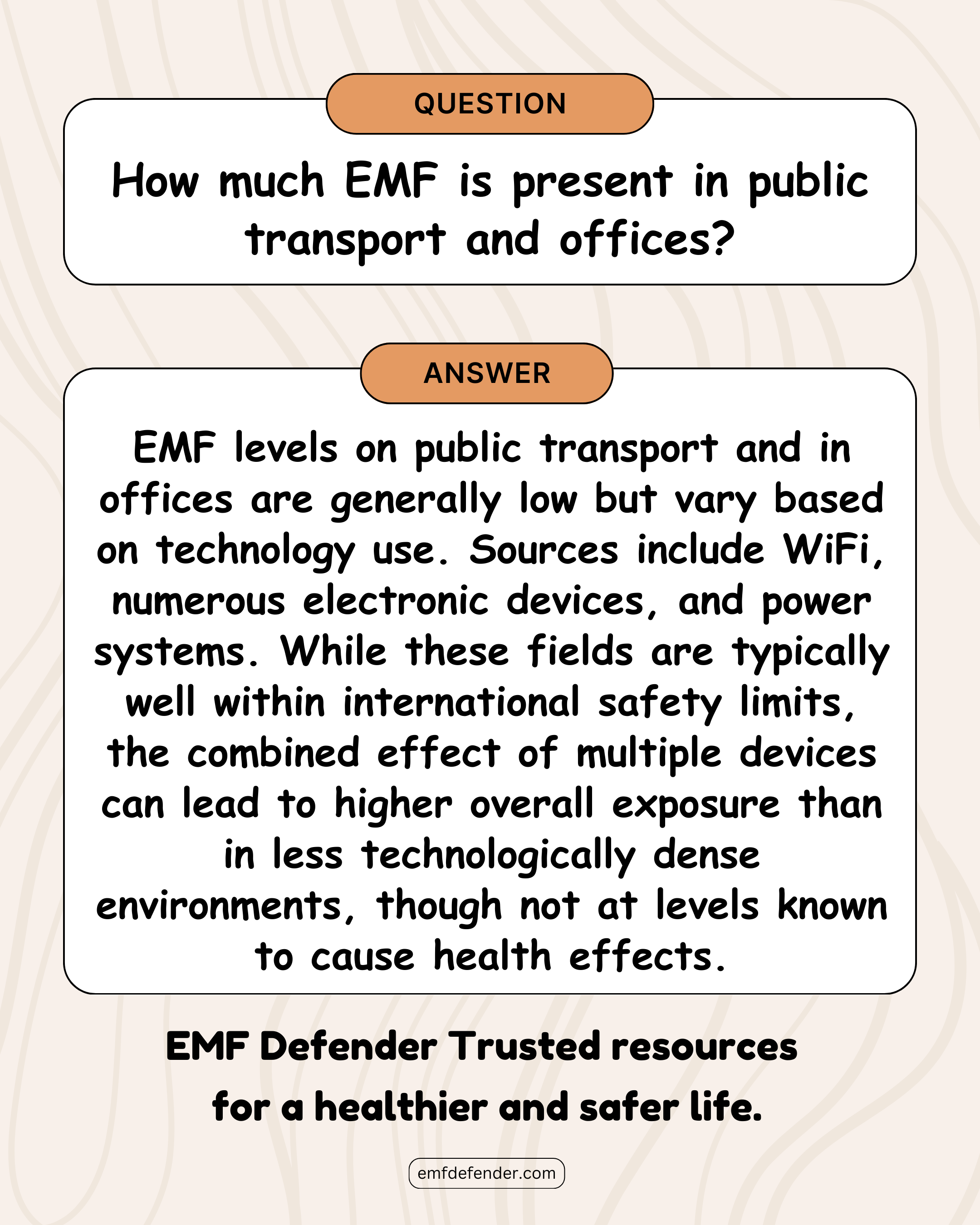
How much EMF is present in public transport and offices?
EMF levels in public transport and office environments are generally low but vary depending on the amount of technology in use. Common sources include Wi-Fi networks, electronic devices, lighting, and power systems. Although these fields typically remain well within international safety limits, the combined effect of many active devices in close proximity can lead to higher exposure compared to less technology-heavy settings. Even so, these levels are not considered harmful according to current scientific evidence and safety guidelines.
Additional Information:
..
Additional Information:
..
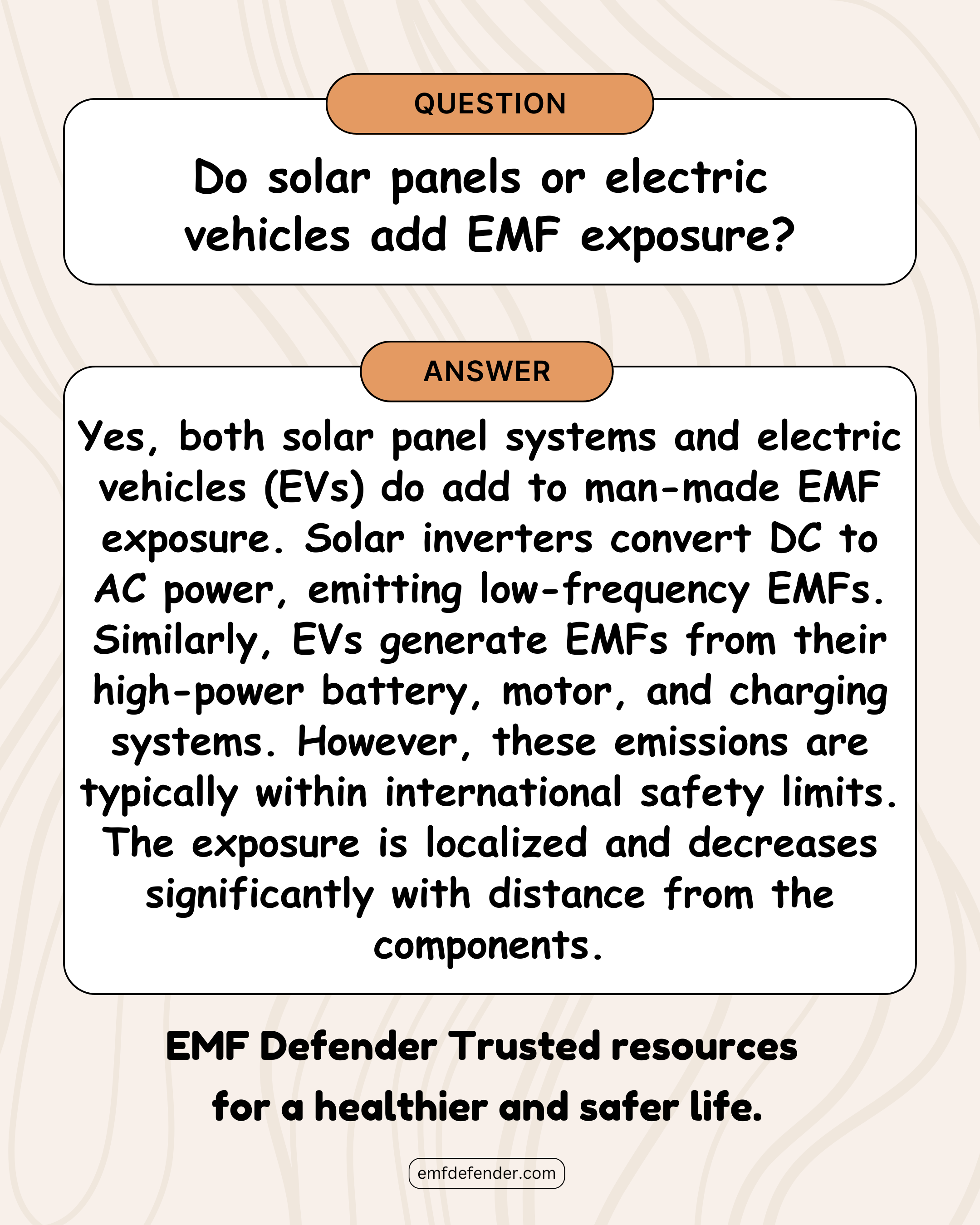
Do solar panels or electric vehicles add EMF exposure?
Yes. Both solar panel systems and electric vehicles (EVs) contribute to man-made EMF exposure. Solar inverters convert DC to AC power, producing low-frequency EMFs, while EVs generate EMFs from their batteries, motors, and charging systems. These emissions are localized, strongest close to the equipment, and decrease rapidly with distance. Importantly, they remain within international safety limits, meaning everyday use of solar panels and EVs does not present a proven health risk under normal exposure conditions.
Additional Information:
..
Additional Information:
..
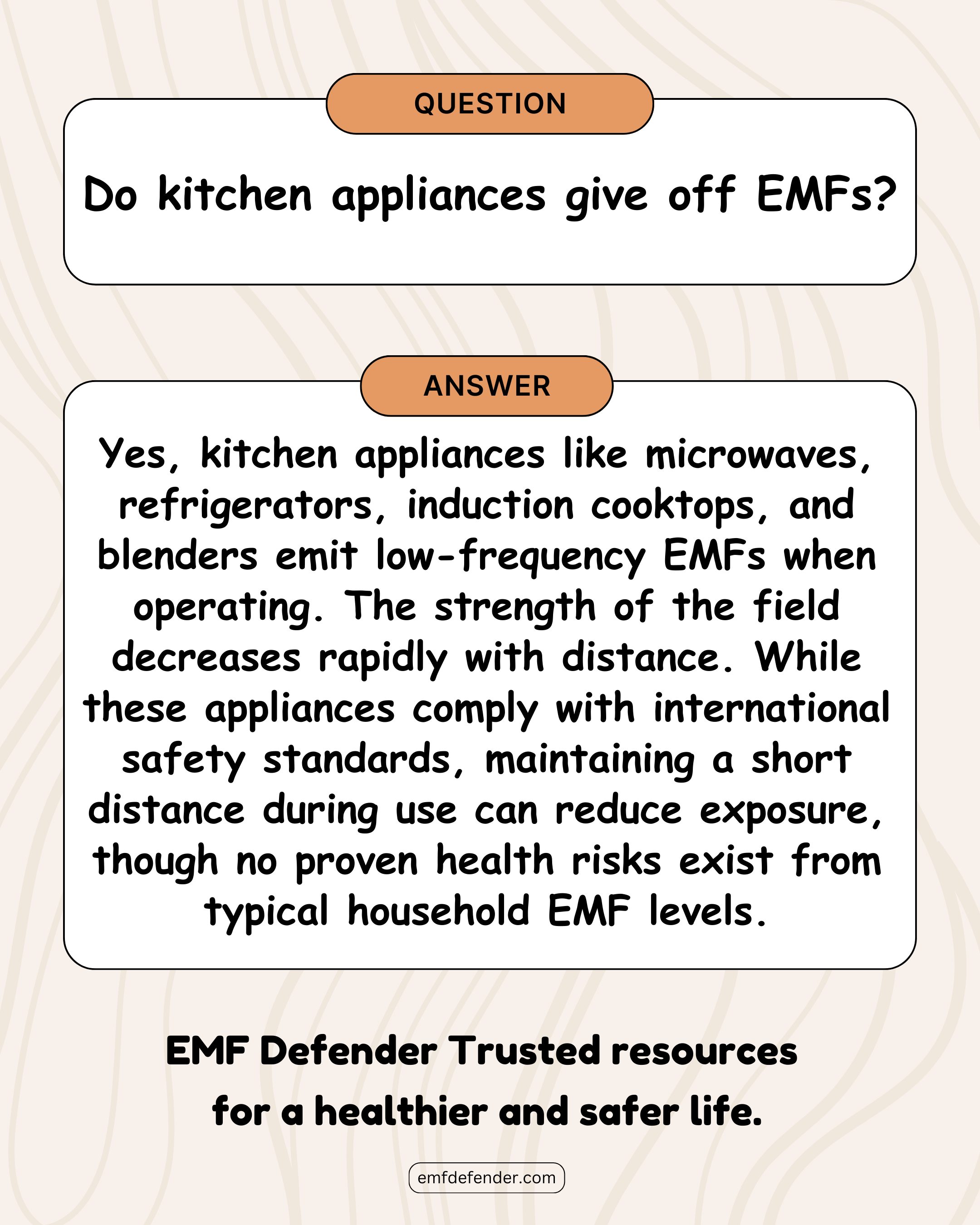
Do kitchen appliances give off EMFs?
Yes. Common kitchen appliances such as microwaves, refrigerators, induction cooktops, and blenders emit low-frequency EMFs while in use. The strength of these fields drops rapidly as you move farther away. All modern appliances must comply with international safety standards, keeping emissions within accepted limits. To further minimize exposure, maintaining a short distance during operation is recommended, even though no proven health risks have been linked to typical household EMF levels from kitchen devices.
Additional Information:
..
Additional Information:
..
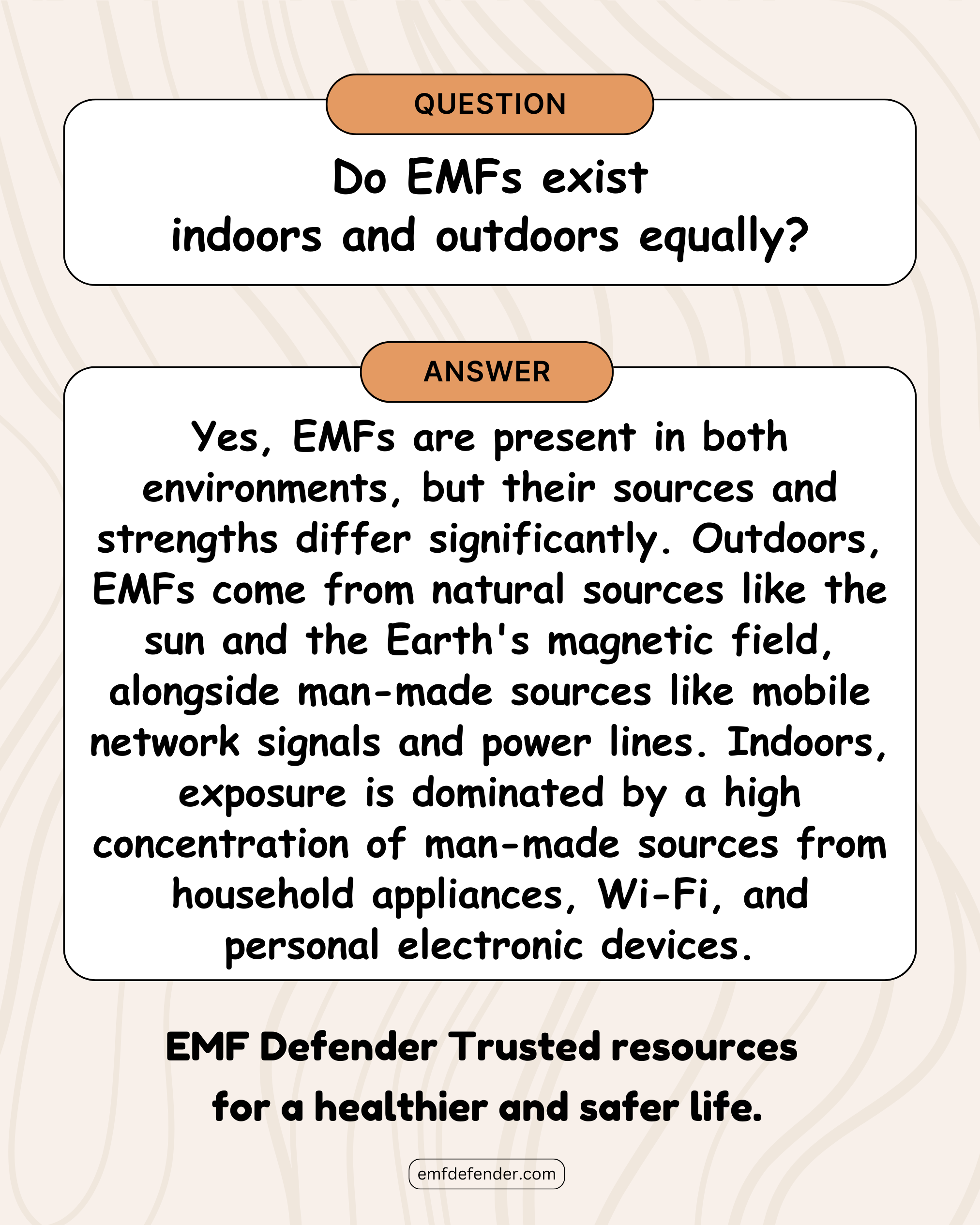
Do EMFs exist indoors and outdoors equally?
Yes. EMFs are present in both indoor and outdoor environments, but their sources and intensity differ. Outdoors, natural EMFs arise from the sun and the Earth’s magnetic field, along with man-made sources like mobile networks and power lines. Indoors, exposure is mainly due to concentrated man-made sources such as Wi-Fi routers, household appliances, and personal electronic devices. As a result, overall exposure levels are often higher indoors compared to outdoor settings, except in areas near strong transmitters or power infrastructure.
Additional Information:
..
Additional Information:
..
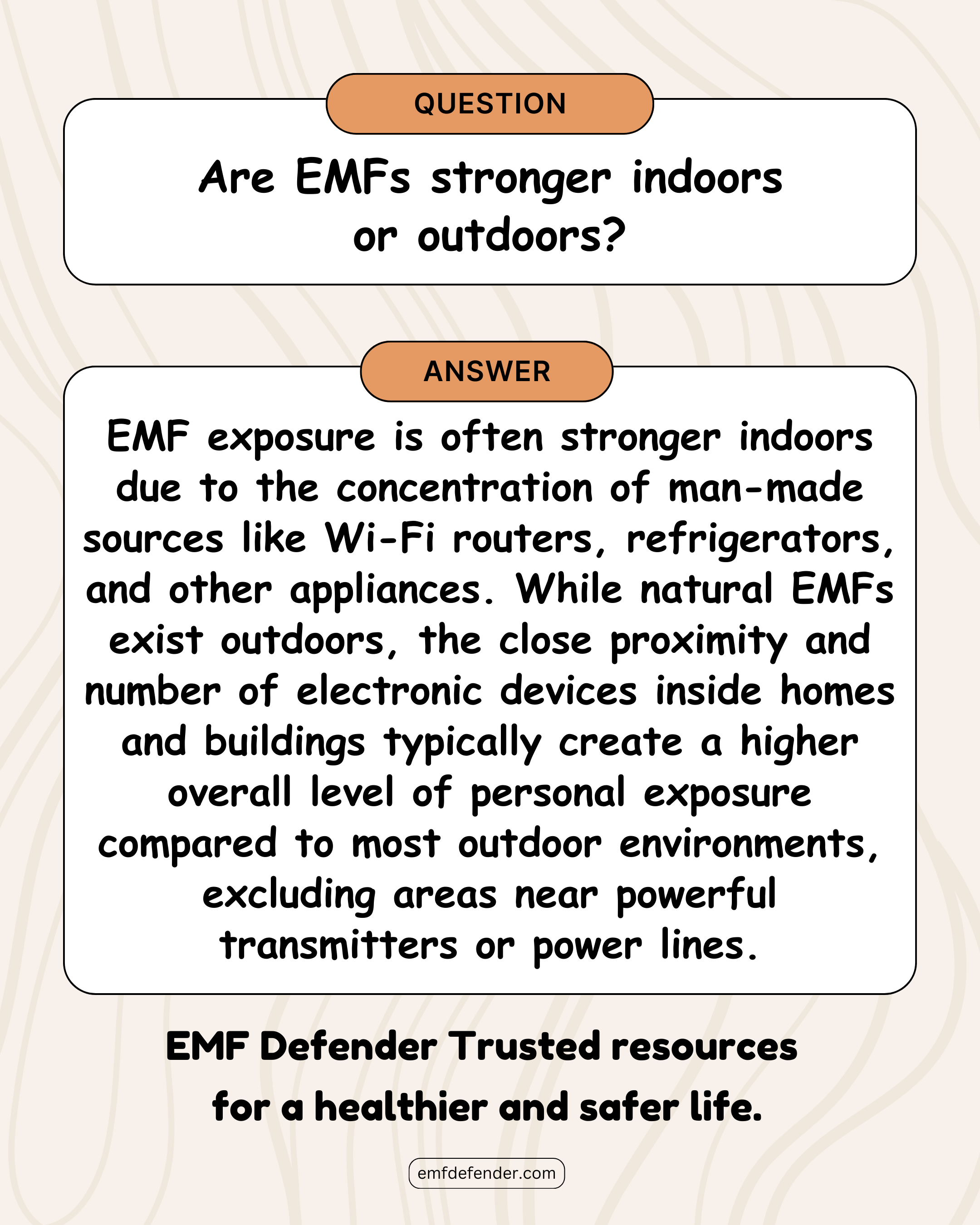
Are EMFs stronger indoors or outdoors?
Yes. EMF exposure is usually stronger indoors because of the many man-made sources concentrated inside homes and workplaces. Wi-Fi routers, refrigerators, televisions, microwaves, and other devices continuously emit EMFs. Outdoors, natural EMFs exist, but unless you are close to powerful transmitters, cell towers, or power lines, exposure is often lower. The limited ventilation indoors and close proximity to devices can significantly increase overall personal exposure compared to most outdoor environments.
Additional Information:
..
Additional Information:
..
- « Previous
- 1
- 2
- Next »